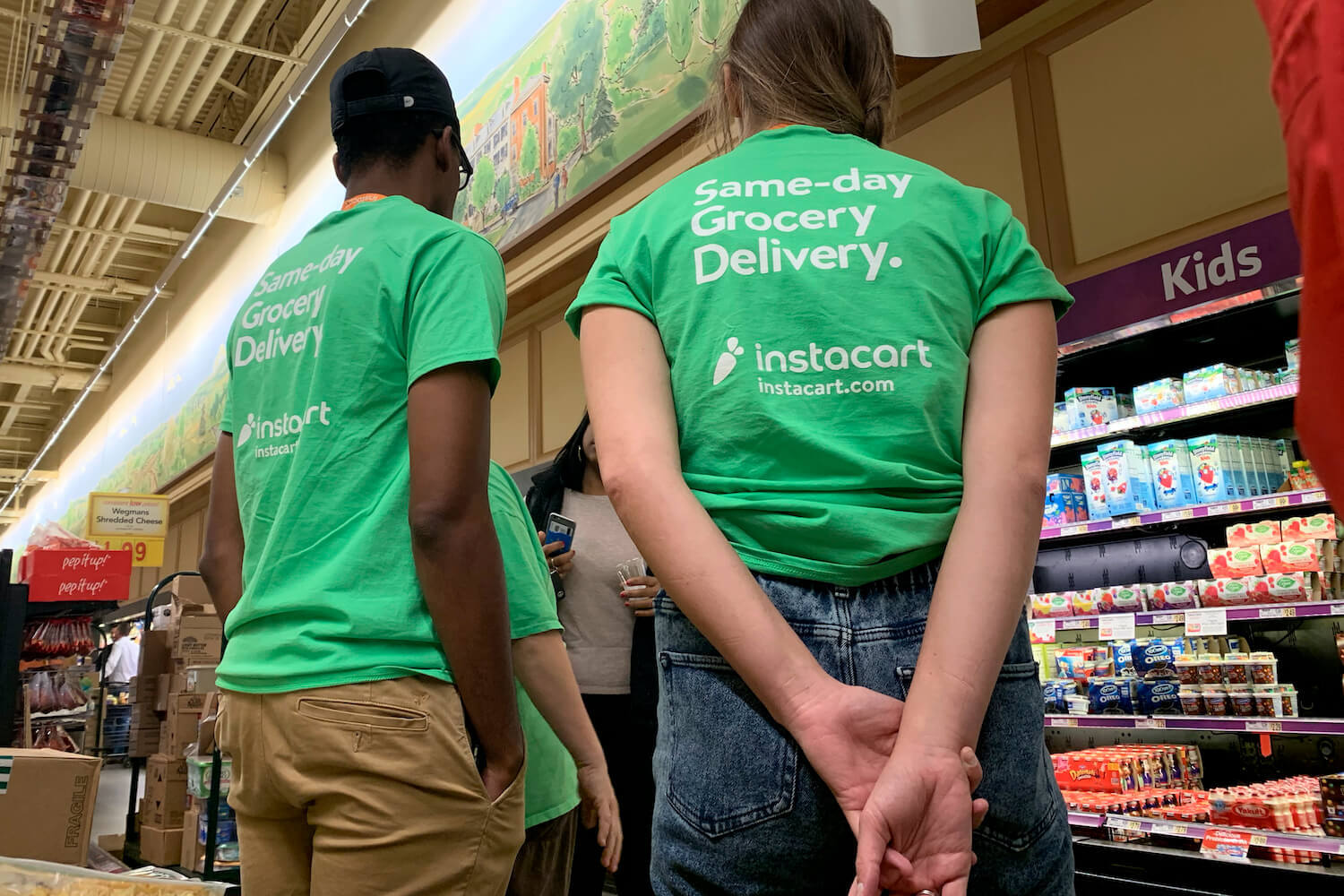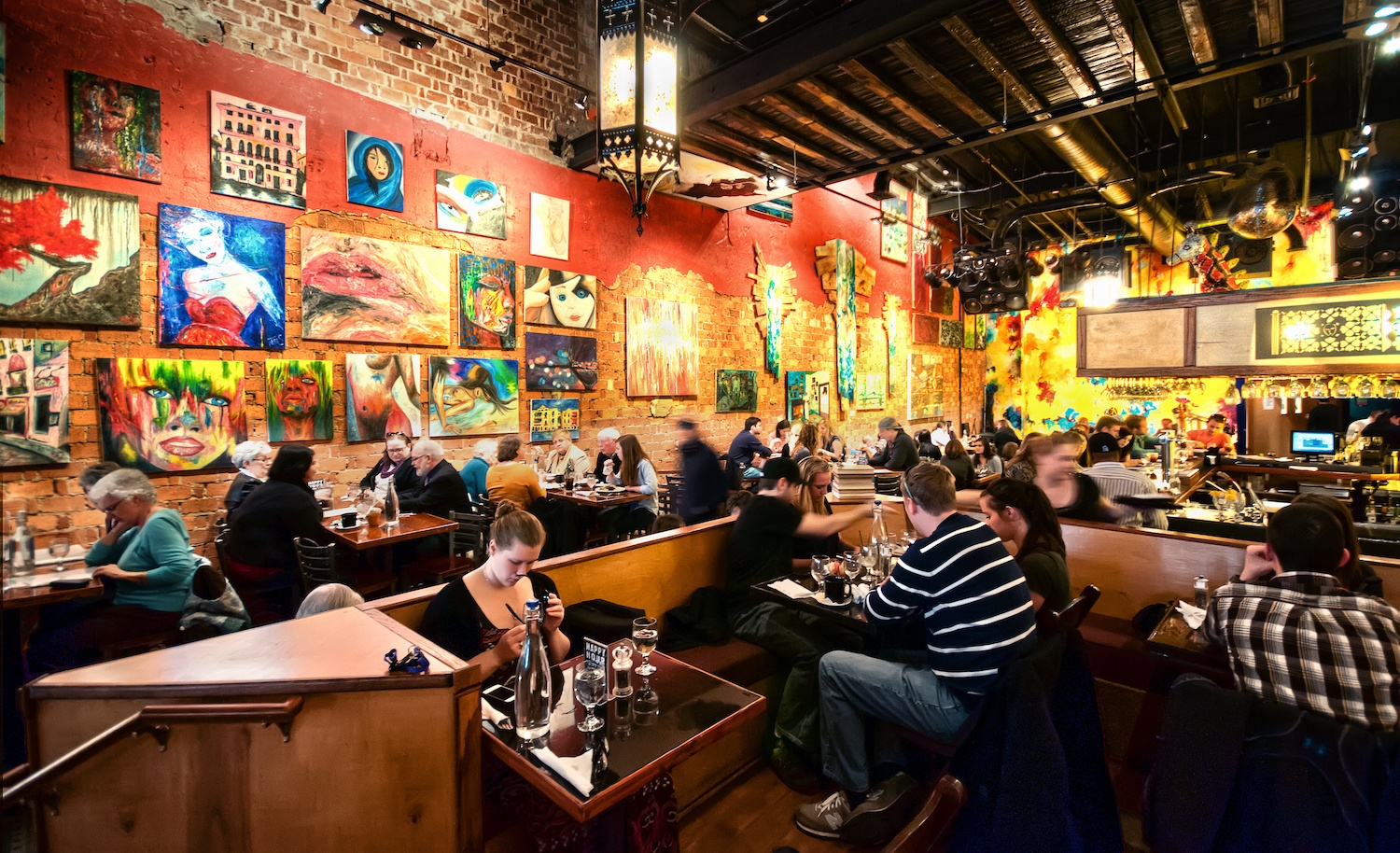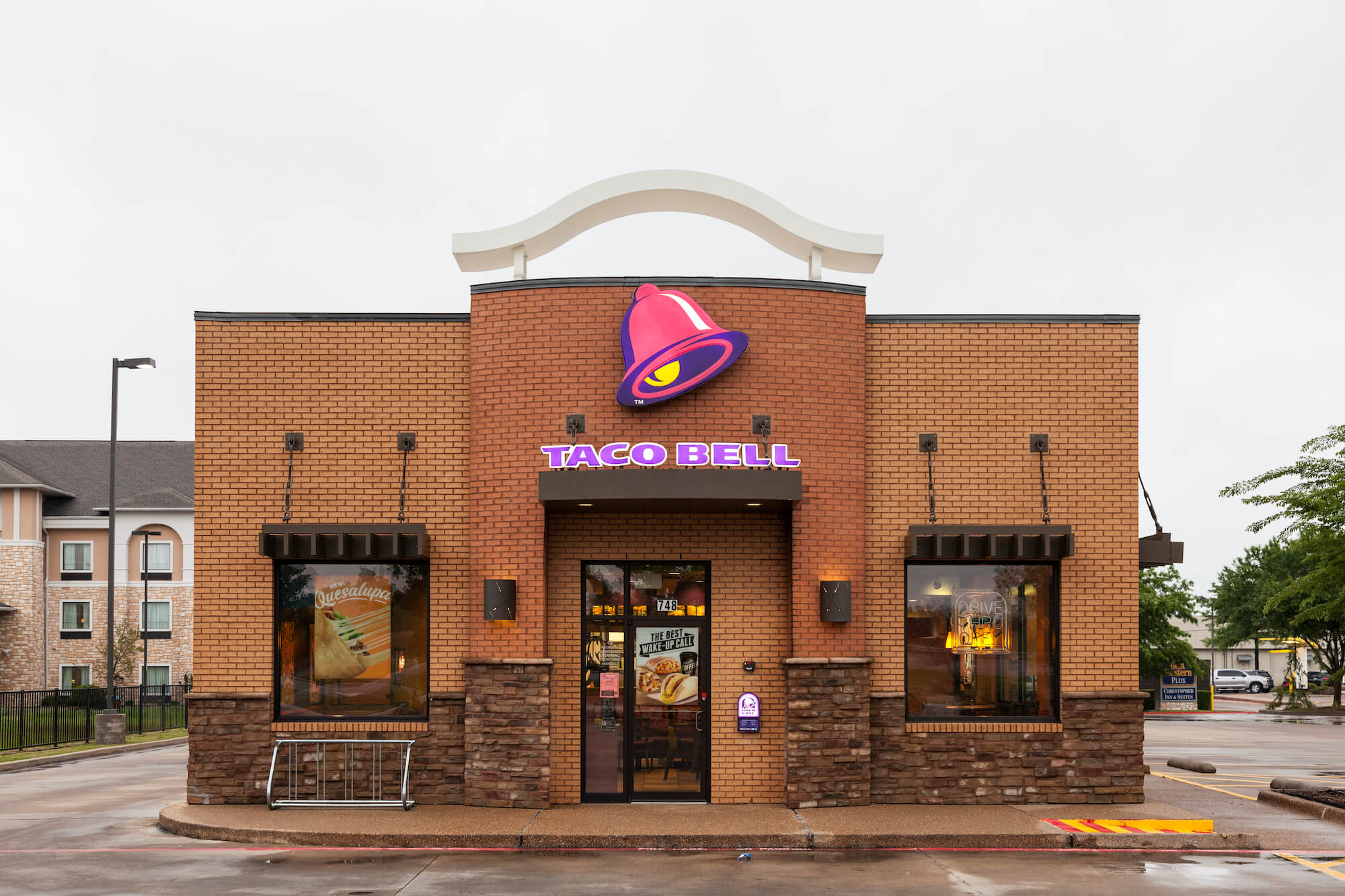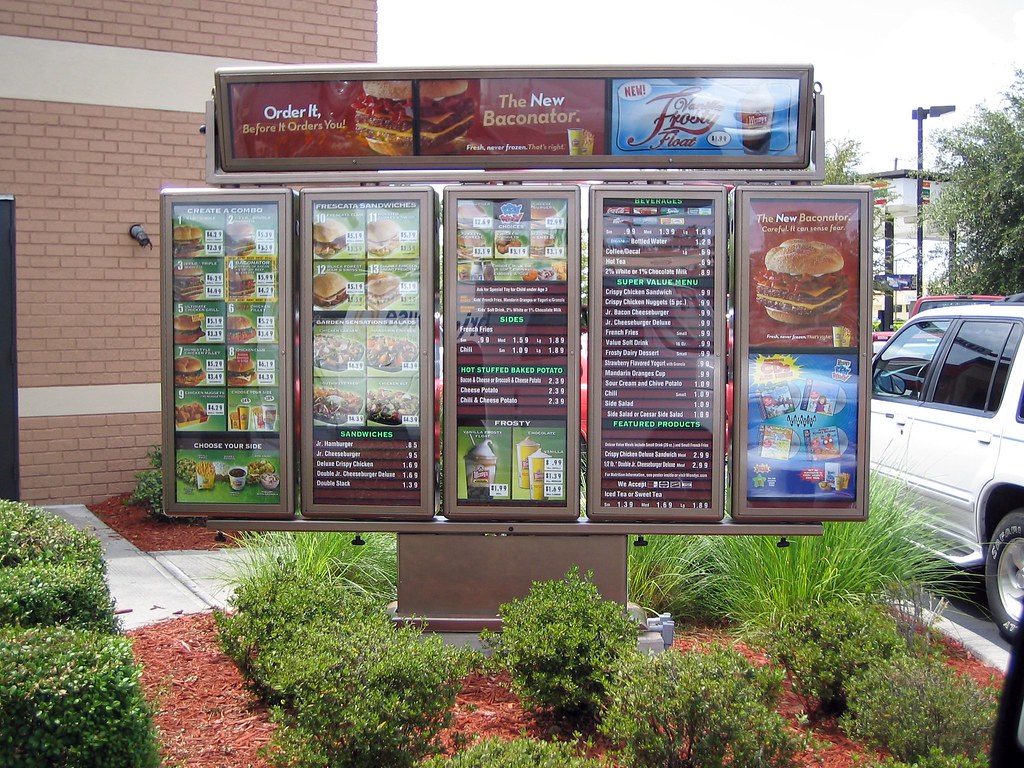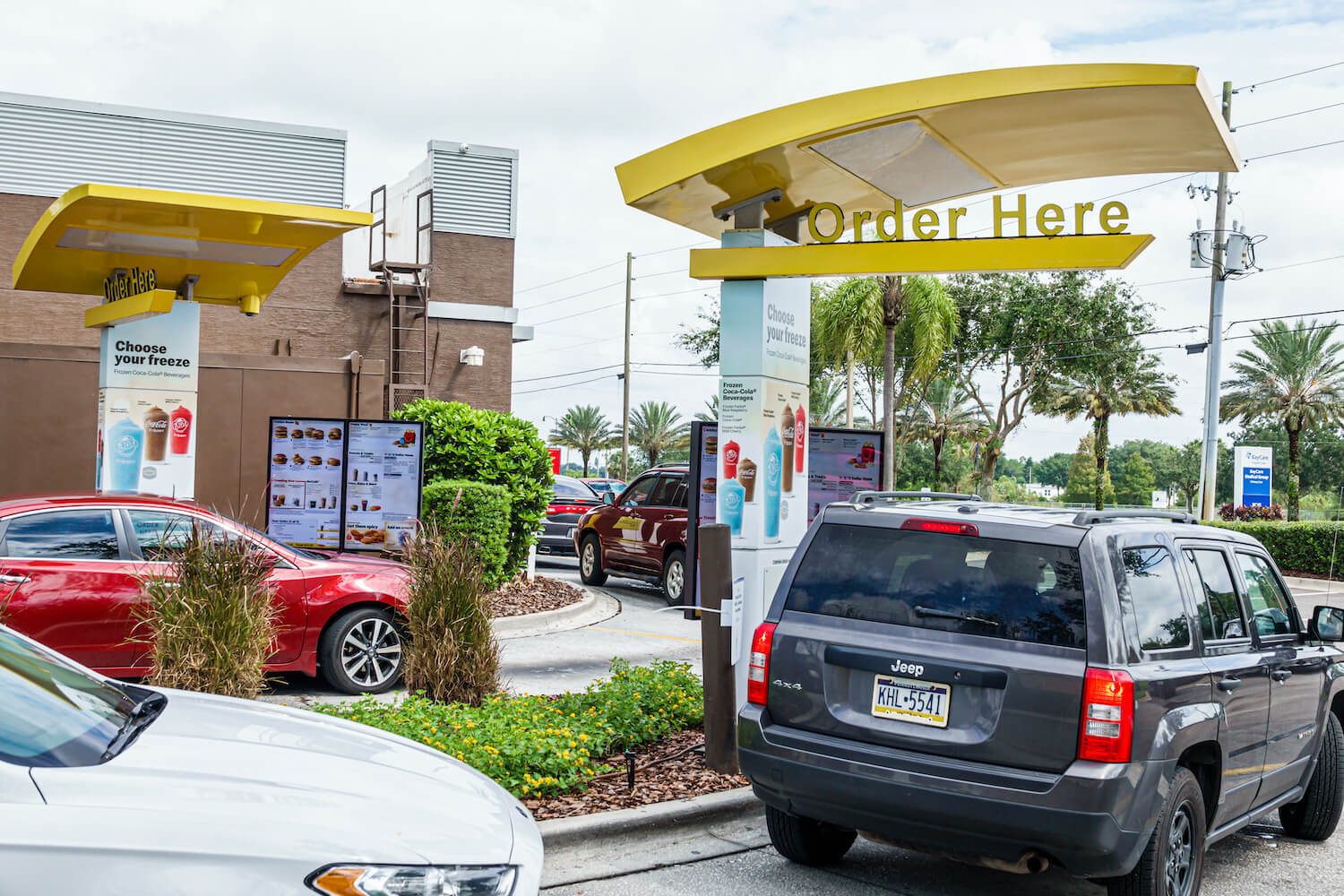
Jeffrey Greenberg/Education Images/Universal Images Group via Getty Images
In 2019, cities across the U.S. started banning construction of new restaurant drive-thrus. The pandemic turned this trend upside down.
As recently as last winter, the drive-thru restaurant’s future seemed shaky.
A host of forces were responsible, led by an increasingly urgent environmentalism and reconsideration of what healthy communities look like. By the end of 2019, cities that had banned the construction of new restaurant drive-thrus included Minneapolis; Fair Haven, N.J.; Creve Coeur, Mo.; and Orchard Park, New York. An additional 27 municipalities banned drive-thrus in Canada.
Then last year, as independent restaurants struggled to adapt to new Covid-19 safety protocols, dine-in and counter service fell immediately out of favor, while pick-up and home delivery thrived. In other words: The more impersonal the restaurant experience, the better. And so, the drive-thru made a comeback.
“Obviously, it’s guided by Covid: The technology, the innovation of it, which made buying food quick and detached, is attractive.”
According to a survey by Bluedot, a mobile marketing company, 74 percent of Americans have used a drive-thru since Covid-19 hit the continental U.S., representing a 43 percent spike since April 2020. Meanwhile, 90 percent of customers surveyed by the National Restaurant Association would prefer curbside pickup to entering a physical restaurant to collect their food. The car, in other words, is once again—and somewhat suddenly—big business for restaurants, and it’s getting bigger.
“We’re seeing brands that would never in a million years embrace the drive-thru, embracing the drive-thru,” said Adam Chandler, author of the 2019 book Drive-Thru Dreams. Chandler believes that there is some nostalgia for the fast food rituals of yesteryear in a time of strife. Still: “Obviously, it’s guided by Covid: The technology, the innovation of it, which made buying food quick and detached, is attractive.”
You’ve likely read about—and seen—how many restaurants converted their parking lots into outdoor dining spaces, to stay afloat in the face of indoor dining restrictions. Less discussed, however, is the reverse trend of making more space for cars and less space for diners—a trend that exists almost exclusively among quick-service restaurants, or QSRs. Throughout 2020, Burger King, McDonald’s, and many of our other biggest fast-food chains revealed design plans for new, Covid-friendly restaurants where the vehicle is king. In any other year, developing new restaurant concepts would be a multi-year process for most chains, but in 2020, restaurants had a prescribed guiding star: Keep people outside as much as possible. Parking lots take the place of dining tables, while multiple drive-thru lanes accommodate both individual customers and courier services like UberEats and Seamless.
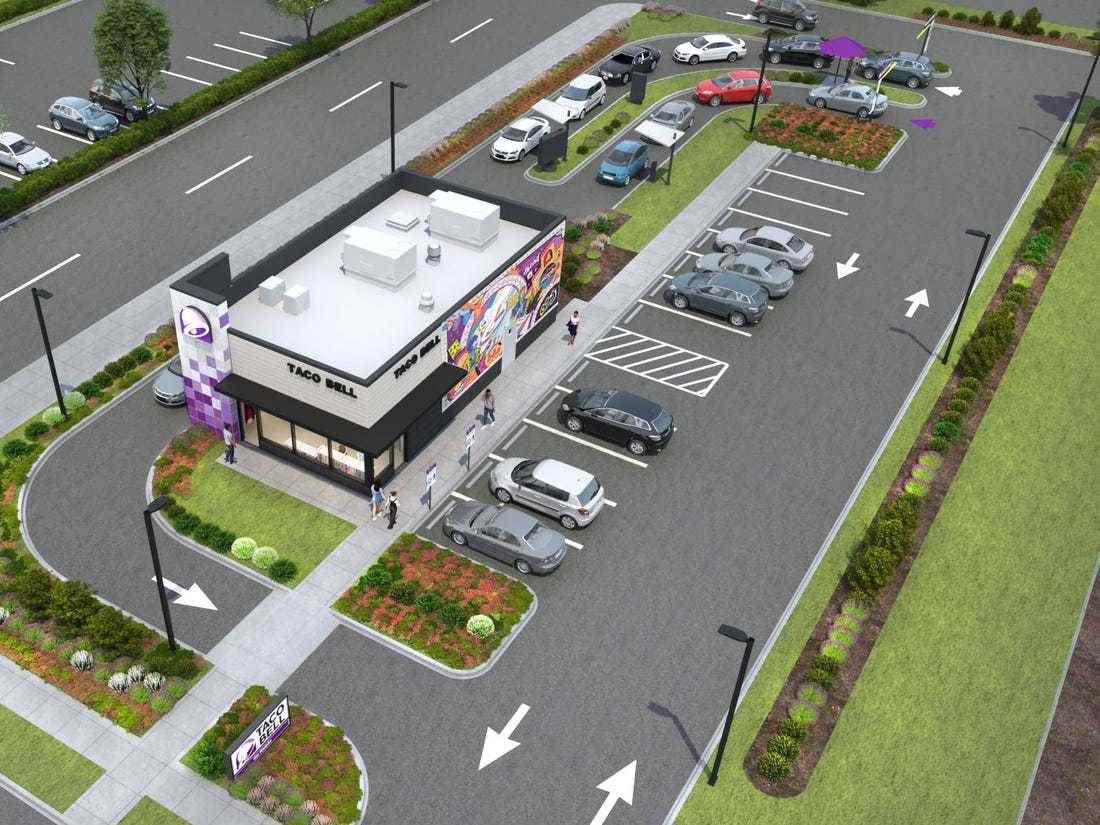
Taco Bell’s new restaurant design is a completely digital experience with multiple drive-thru lanes and curbside pickup.
Courtesy of Taco Bell
Take, for instance, Taco Bell’s new restaurant design, called Taco Bell Go Mobile, a “completely synchronized digital experience” involving multiple drive-thru lanes, curbside pickup, and “bellhops” who take orders via tablets. Or McDonald’s, which recently unveiled new restaurant designs at its first investor update in three years, showcasing dedicated parking lots for pickup orders, drive-thrus where orders are delivered via conveyor, and a planned concept restaurant with multiple drive-thru lanes and no indoor dining whatsoever. Some of these concepts were in the works pre-Covid, as restaurant trends were already skewing towards mobile ordering and contactless pickup; the pandemic rapidly accelerated them.
But the shift towards car-focused quick-serve restaurant models is perhaps best exemplified by Burger King. That chain unveiled a new restaurant concept last summer, which will begin construction in 2021; among its key features are shaded parking spots for food ordering and in-car dining, multiple drive-thru lanes, and a T-shaped physical restaurant with top-floor dining, allowing a smaller physical footprint to accommodate—you guessed it—more cars. In a move pulled directly out of a 1950s playbook, Burger King is calling its new restaurant concept The Restaurant of Tomorrow.
But these restaurants aren’t popping up everywhere. Across the board, this drive-thru pivot exists almost exclusively in suburbs and small cities, where their locations had a larger footprint anyway; at the same time, fast-food chains are shuttering their metropolitan locations, where a drop in foot traffic has caused bottom lines to plummet.
Starbucks, for instance, plans to close 400 stores by the end of this year, largely in cities, while expanding its drive-thru and pickup options in suburban locales. Subway, which currently does not offer drive-thru at any of its locations in the U.S., shuttered 1,000 stores across the country in 2020, as drive-thru friendly fast food chains such as McDonald’s and Taco Bell reported healthier bottom lines than ever. Sweetgreen announced plans to open its first suburban location, in Highland Ranch, Colorado—complete with the chain’s first-ever drive-thru. Shake Shack will be doing the same, planning to open its first drive-thru location just outside of Orlando later this year. Wawa, the east-coast convenience store/fast food chain, opened its first standalone drive-thru location last month.
“Small cities were already designed for cars, not for people,” said Madeline Brozen, Deputy Director, of the Lewis Center for Regional Policy Studies at UCLA. “Right now, any city that wants to try to orient their design guidelines towards long-term choices relating to climate change and land use and human-centred design are typically surrounded by suburban locations that don’t typically have these restrictions. And that’s where these fast-food restaurants are going to set up.”
“Small cities were already designed for cars, not for people.”
Brozen says that the shift towards car-centric dining is in line with current zoning requirements in most U.S. cities, which typically indicate that dining establishments of a certain size need to have spaces for car parking. But, she says, “there is a move within the [quick serve restaurant] space to differently allocate their car space,” Brozen says, citing multi-lane drive-thrus—which allow several cars to pull up and be served at once, at separate ordering kiosks—over old-fashioned parking spaces. “But this is still in line with the underused, oversupplied car space that municipalities typically already require of these businesses.”
What Brozen means by this is that suburban fast-food chains have always allocated a significant chunk of their overall footprint to cars; now, they’re just planning to do it differently. It’s evident in their new designs: looking at artists’ renderings of these new concepts, it’s almost difficult to imagine where these restaurants will put their kitchens, so small are the actual buildings themselves. Meanwhile, parking lots—the erstwhile “underused, oversupplied car space”—will be supplanted by side-by-side drive-thru lanes.
While chains such as McDonald’s and Starbucks currently have the ability to capitalize on a growing trend towards vehicle-focused infrastructure, small restaurants can’t necessarily compete on the same terms. Mom-and-pop shops in suburban strip malls may be able to provide curbside service to one or two cars in a shared parking lot, but many independent standalone diners and cafes simply can’t retrofit their existing structures—or expand their footprint—to accommodate a drive-thru window. And offering delivery only, via services like UberEats and DoorDash, results in restaurants taking a substantial financial hit that fast-food establishments can compensate for with pick-up and drive-thru options.
While chains such as McDonald’s and Starbucks currently have the ability to capitalize on a growing trend towards vehicle-focused infrastructure, small restaurants can’t necessarily compete on the same terms.
Some independent restaurateurs have been forced to get creative. Katryn Malen, who owns Graham’s Coffee Parlor in Niskayuna, New York, has a parking lot that can only accommodate seven cars. Her business is largely dependent on walk-ins: Pre-Covid, she could seat up to 30 people inside at a time. But when the virus hit New York, Malen found herself struggling to provide a sustainable level of service to customers who would often come inside without masks on, jeopardizing the health and safety of herself and her staff.
Graham’s had a sliding window a few feet from where staff accept and take orders, which Malen converted into a walk-up takeout window. Cars pull up, park, and their drivers walk up a small ramp to order and collect their food. Malen will also pop outside to place orders on top of customers’ cars, if they call ahead to request it. The window was open all summer, and after about a month of keeping it closed Malen has decided to bring it back, to keep things safe—and running—throughout the winter. To accommodate customers who are not willing to wait out in the cold, she’s also now allowing three customers at a time into the store, and will run orders out to customers’ cars if they order in advance.
Other businesses with no drive-thru capacity are, like quick-service restaurants, taking a tip from the 1950s, bringing back car-hop service, where wait staff will courier—on foot or on roller skates—orders to diners’ cars. One such restaurant, the Broadway Diner in Baraboo, Wisconsin, introduced car-hop in May of this year, and even now, as temperatures are dipping, continues to bring food to diners parked in any of their 15 parking spots. “You pull into a spot, you call us, and we’ll come out and serve you,” said Vonnie Castree, Broadview’s co-owner. “Most of the time, we only have one or two people doing carhop, but it’s just another way for us to ensure our customers can get served. We wanted to do roller skates, but we were worried about liability.” Castree said Broadway plans to continue carhop service indefinitely.
“My concern is that this is going to further inequality. As we design, zone, and plan for the future, car ownership should not be taken for granted.”
It may be heartening to know that some small businesses could survive a newly car-focused restaurant ecosystem. But Brozen worries that the emphasis on car-only dining options—like Burger King’s Restaurant of Tomorrow—presents an issue of accessibility, in that such establishments completely shut out individuals who don’t have a car.
She noted that the drive-thru-only restaurant of the future may set small cities back: More than 10 million American households don’t have cars. These people could now be looking at a restaurant future from which they’re barred access. It’s a tradeoff: Car ownership is increasing among low-income individuals, but at the expense of the disposable income that could be used for take-out food.
“There has been a trend in land use design for the last two decades to proactively design spaces to be more oriented around people, and not cars,” Brozen said, adding that a pivot towards drive-thru-only is a reversal of that trend. “My concern is that this is going to further inequality. As we design, zone, and plan for the future, car ownership should not be taken for granted.”
Last year, Chandler, who was previously based in Brooklyn, and his fiancée—a born-and-raised New Yorker—relocated to the suburbs. One of the biggest adjustments, he said, has been seeing his fiancée become a car person. “When you’re in the city, you just get used to walking to the corner, walking down the block,” said Chandler. “But once you realize how conveniently you can get anything from the driver’s seat, it’s hard to resist.”

